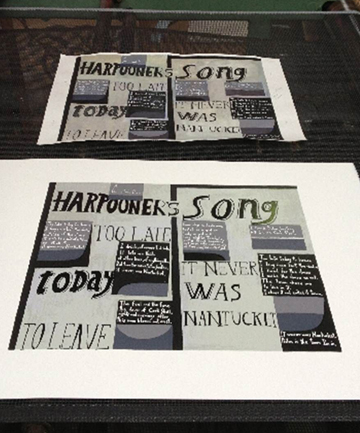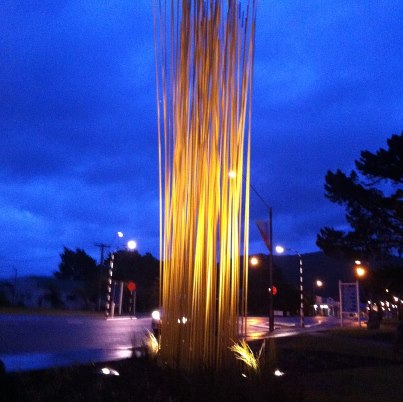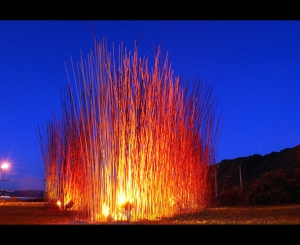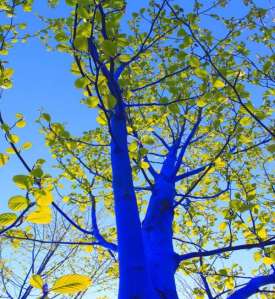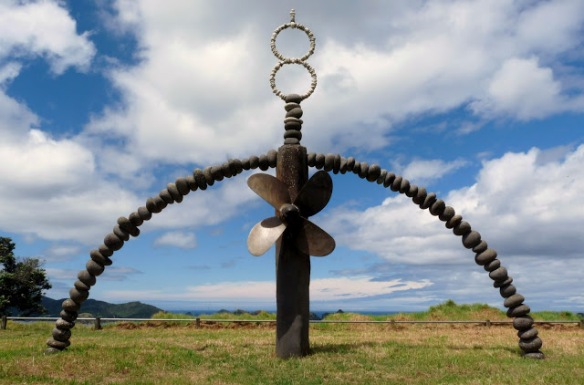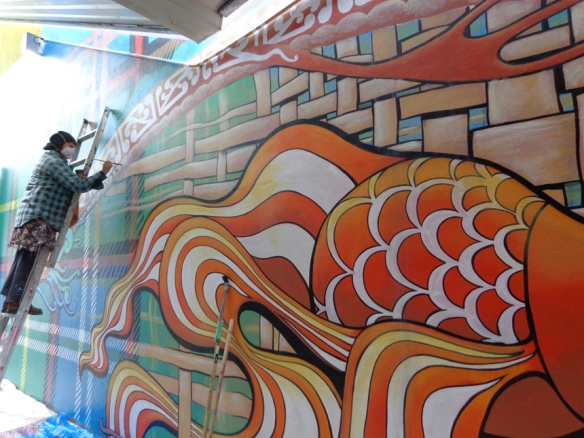This is the last main blog post (for now) for my journalism blog assignment. Within this blog, there is a variety of news articles and information on New Zealand artists I have found while creating it. I will talk about what I found out during the time of collecting everything that has been posted on here.
When I first started this research blog, I really wanted to find a topic that would interest me. So I thought a little bit out of the box and came up with the exploration of political art and artists in New Zealand. It is art that conscious, that asks questions, and is unique to this part of the world. At first, I wasn’t actually sure how much information I would find on this topic. But I have been pleasantly surprised with the range I have found.
I also thought a lot about the name of my blog and came up with Art Speaks Action. I think the name sums it up well. It is artwork created by artists who want to be a part of change in this country and the world.
New Zealand is such a diverse country, and people express voice opinion and concern in many different ways. Sometimes the visual speaks louder than words in a way. It can have more impact. And art in all forms goes beyond the barrier of language.
Like any good journalist, who stands up for people and issues that are being over looked in communities or around the world, I believe artists with a passion for certain topics and issues have the same job. To ask the questions that need answers, and to get the issues out there so more people are aware. They have taken on a responsibility to uncover the truth, and to let these things be seen.
This next quote came from a media release on the exhibition ‘ARTISTS as ACTIVISTS: Fighting for our environment’
“The idea of artist as protester is nothing new and the artist’s readiness to communicate the unspoken, to think beyond his or her own experience, to attempt to push the audience out of its comfort zone, and speak for those who do not dare, has created some of the most powerful artworks in the world. Here in New Zealand, artists are seldom far away from controversial issues and in recent times, the environment has been a particular driver for protest.”
Over the time I have been collecting information up for this blog, these are main themes that have come out through the artwork:
Art about current/historical events: things that have had a big impact on New Zealand; People vs people: culture, identity, who we are as people in Aotearoa, social justice; People vs the land/environment: the effects that people have on the earth, such as rivers, oceans, climate change, and mining; and lastly, People vs animals: ecology and conservation, the extintion of native birds, oil spills, the treatment of animals, the destruction of their living environments. Some of the artists’ work I have found may cover all of these points in one go!
I have only chosen a few examples to highlight and expand on each heading below.
Current/historical events: These are things that have had a big impact on New Zealand, and the art pieces show a snapshot in the history of New Zealand.
A few examples of these events that have been illustrated by art work are: The bombing of the Rainbow Warrior vessel – Chris Booth’s sculpture-Rainbow Warrior Memorial, New Zealand becoming a nuclear free country – with Blast! The exhibition. And the Trans-Pacific Partnership Agreement cartoon competition.
People vs people: culture, identity, who we are as people in Aotearoa, social justice.
There are a few art exhibitions in this blog either raising awareness on issues such as child abuse, or that were set up to raise funds for causes such as Women’s Refuge, or as the Little Lotus Project did, exhibited works to raise money for refugee Burmese children.
We are a multi-cultural nation, and the mix of cultures, ethnicities and backrounds continues to become richer in New Zealand.
This mural by Dan Mills and Phillipa Crofskey- shows Dunedin’s colourful history. It is touching on the diversity we have in New Zealand as a country.
WHAKAWHITI ĀRIA: TRANSMISSION exhibition at Te Manawa in the Manawatu: “We chose to comment on each other’s artworks to create a show that provides a distinct point of view on the state of Maori art,” artist, Israel Tangaroa Birch said.
Lastly, the Inside Out Project New Zealand with their group community project raising awareness of the children whose school was to be closed and never reopened again after the Christchurch earthquakes.
People vs the land/environment: the effects that people have on the earth, such as rivers, oceans, climate change, and mining.
Some of painter, Nigel Brown’s work confronts us about our effects on our country and the earth. Here are some quotes from a few of his paintings that display this. Both commenting on river pollution, extinction of native birds and climate change.
One painting called ‘We are water’ 2009 states: “Eh river we are sorry, we are largely water. If we don’t respect it, what do we respect? If we abuse rivers, we abuse ourselves.”
In another series called ‘Short Lives of Birds‘ one painting named’ Let’s Come to Terms With Birds’ says: “Let’s come to terms with birds, facing their extinction and our own. Mindful of our own purpose driven fate changing with the weather.”
In the exhibition called ‘Fracked‘, 22 Taranaki Artists express their views on the controversial topic of fracking.
And Konstantin Dimopoulos’ series, ‘The Blue Trees‘ was designed to raise awareness of deforestation.
“Art can be an incredibly powerful tool. It helps us get the issue of deforestation on to the front cover of a magazine, not the back pages.” – Konstantin Dimopoulos
People vs animals: ecology and conservation, the extintion of native birds, oil spills, the treatment of animals, the destruction of their living environments.
A few examples from the blog that illustrate these things are:
The Rena Oil spill disaster: The oil prints featured in this exhibition organised by Greenpeace were made with birds killed by the Rena oil spill. The images are a stark reminder of the devastation an oil spill can cause.
The Wakey Wakey Wakey exhibition: “Wakey Wakey Wakey is calling on New Zealanders to wake up to the Kermadecs – it’s a unique, awe-inspiring place that New Zealand is responsible for. We want more people to know about it and feel connected to it,” John Reynolds.
The work of Bill Hammond, In his paintings featuring half animal/human creatures with avian heads and human limbs, he is commenting on human interaction with the birds and environment of this land.
And lastly the work of Angela Singer. The art work by New Zealand-based artist and animal rights activist, shows her concern with hunting and our moral and ethical approach to animals.
In conclusion, it was an eye opening and encouraging experience collecting all of this information up. My plan is to continue with it, and maybe expand my search to other places around the world. There is so much out there. The information in this blog just proves to me that New Zealand is full of artists who have their finger on the pulse, and care about what happens to this country. They are using their creativity to speak out and encourage others to see things with new eyes, and from a different perspective. And what is even better, is that their work is not just being seen within this country. A lot have taken their art works and passions about certain issues out on an international level, and they are really being noticed for it.
“In a decaying society, art, if it is truthful, must also reflect decay. And unless it wants to break faith with its social function, art must show the world as changeable. And help to change it.” – Ernst Fischer (1899-1972. Writer, philosopher)


